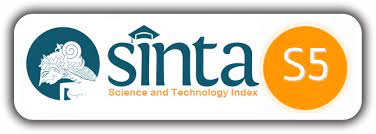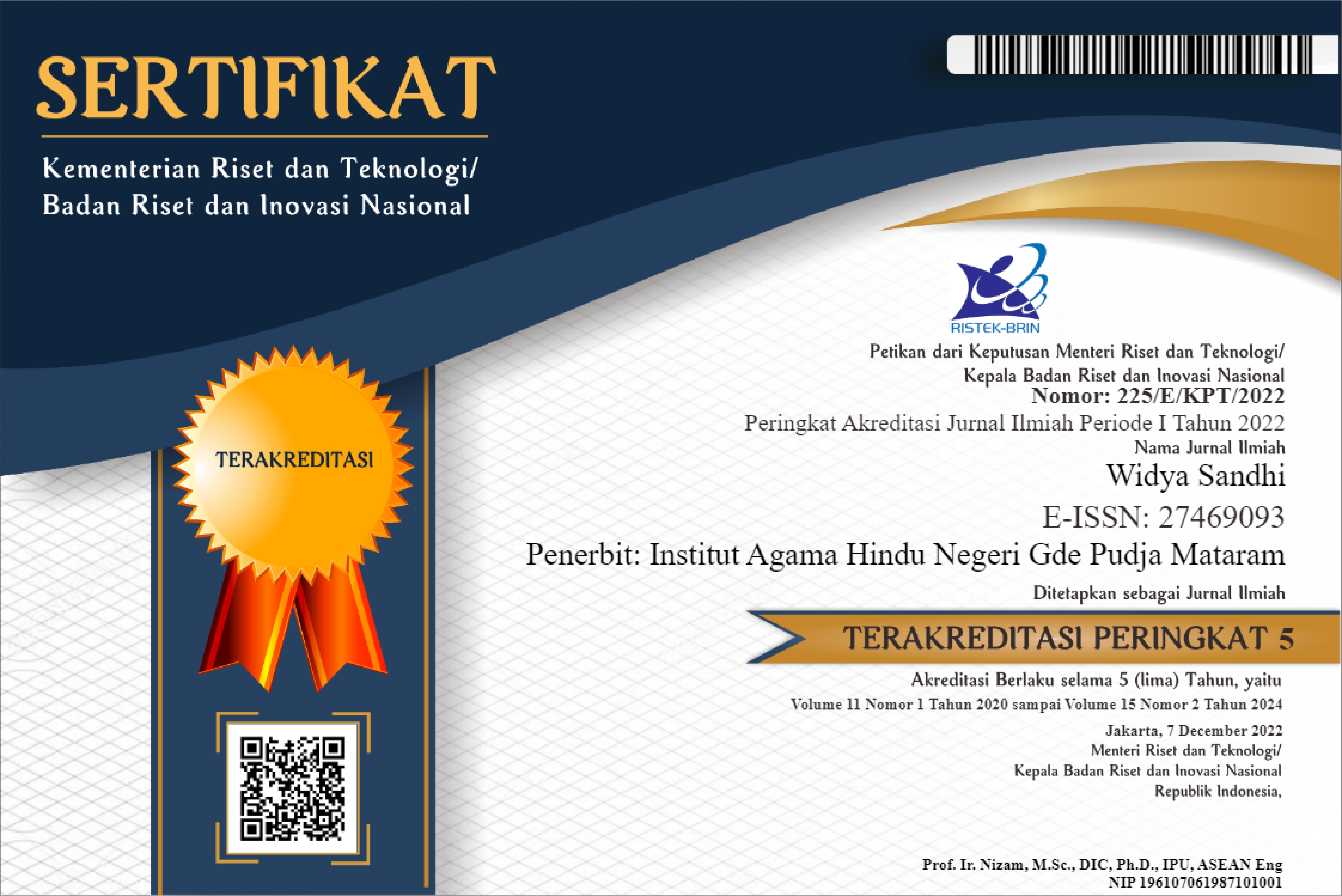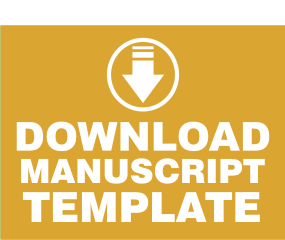YOGA ASANA DALAM MENGEMBANGKAN KECERDASAN JAMAK (MULTIPLE INTELLIGANCES) PADA ANAK DI PENDIDIKAN ANAK USIA DINI PELANGI CAKRANEGARA
Abstract
Early childhood education becomes very important to prepare children to achieve success in the future. Recent research in the field of psychology shows that the future success of children is not only determined by IQ but influenced by other intelligence. Therefore, plural intelligences termed multiple intelligences need to be developed in children from an early age through various learning activities. As in PAUD Pelangi Cakranegara, the development of plural intelligence becomes the main thing especially with the various demands of parents for their children later achievement when entering the school level. Development of multiple intelligence in PAUD Cakranegara done with various learning activities one of them yoga asana practice. In general, yoga asana is known as a system of physical exercise that aims to improve physical and spiritual health. Referring to the background, then conducted a reserch related to the development of multiple intelligences through yoga asana in PAUD Pelangi Cakranegara so that it can be known type of yoga asana is taught and developed intelligence, the process of implementation, and its implications on the child.
This research was conducted by using qualitative method with descriptive qualitative data analysis. Data obtained from observation, interview, documentation and checking the validity of data that is: credibility, dependability, and konfirmability. In this research using Humanistic theory and Model theory (Modeling). The results of this study indicate that all asanas trained in PAUD Pelangi Cakranegara can develop multiple intelligences, depending on how the teacher's creativity in conveying the asana movements. This is seen in terms of naming the movement of the names of animals, plants, and other objects, as well as the delivery of the benefits of movement by using a very simple language. From yoga asana practice can develop six multiple intelligences, namely: (1) linguistic intelligences, (2) bodily kinesthetic intelligences, (3) intrapersonal intelligences, (4) interpersonal intelligence, (5) visual / spatial intelligence, (6) spiritual intelligences.The yoga asana practice is done according to the curriculum 2013with integrative thematic. The process of training that includes preparation, integrated implementation, centered on learners, playing while learning, flexible, and evaluation as a result of learning. Implementation of asana yoga practice without any coercion, pressure, but gives freedom, comfort in moving. This yoga asana practice has implications for children's learning readiness and the motivation of children coming to school.
References
Baskara, Adya, dkk. 2011. Kecerdasan Emosi Ditinjau Dari Keikutsertaan Dalam Program Meditasi.Jurnal psikologi vol. 35. No 2, Juni 2011: 101-115. (file:///C:/Users/WIN%207/Downloads/Documents/ipi368728.pdfdi unduh pada 26 Pebruari 2017)
Budiartati, Emmy. 2007. Pembelajaran Melalui Bermain BerbasisKecerdasan Jamak Pada Anak Usia Dini.Jurnal Lembaran Ilmu Pendidikan Jilid 36. No 2, Desember 2007:96-103. Dalam (http://download.portalgaruda.org/article.phparticle= 137103&val=568.pdf di unggah pada 7 Maret 2017).
Danim, Sudarman. 2002. Menjadi Peneliti Kualitatif. Bandung : CV. Pustaka Setia
Darsono dkk. 2000. Belajar dan Pembelajaran. Semarang: IKIP Semarang Press
Irawan, Prasetya. 2006. Penelitian Kualitatif & Kuantitatif Untuk Ilmu-Ilmu Sosial. Jakarta: Departement Ilmu Administrasi FISIP-UI
Jamaris, Martini. 2014. Kesulitan Belajar Perspektif, Asesmen, dan Penanggulangannya. Bogor: Ghalia Indonesia
Mashar, Riana. 2011. Emosi Anak Usia Dini dan Strategi Pengembangannya. Jakarta: Kencana.
Moleong, Lexy J. 2004. Teori Dan Aplikasi Kecerdasan Jamak (Multiple Intelligence), Buletin Padu Jurnal Ilmiah Anak Dini Usia Edisi Khusus 2004, Semua Anak Berpotensi Jenius
Putri, Dianingtyas Murtanti. 2012. Pembentukan Konsep Diri Anak Usia Dini Di One Earth SchoolBali. Journal Communication Spectrum, Vol. 2 No. 1 Februari - Juli 2012. ISSN: 2087-8850. Hal. 100-117. (dalam file:///C:/Users/WIN%207/Downloads/Documents/ipi59263.pdf di unduh pada 13 Maret 2017)
Saraswati, Swami Satyananda. 2002. Asana, Pranayama, Mudra, Bandha. Surabaya : Paramitha
Suyadi dan Dahlia. 2014. Implementasi dan Inovasi Kurikulum PAUD 2013, Program Pembelajaran Berbasis Multiple Intelligences. Bandung: PT Remaja Rosdakarya
Yaumi, Muhamad dan Ibrahim Nurdin.2013. Kecerdasan Jamak (Multiple Intelligences) Mengidentifikasi dan Mengembangkan Multitalenta Anak.Jakarta: Kencana
Yus, Anita. 2011. Model Pendidikan Anak Usia Dini. Jakarta: Kencana
www.paud-dikmas.kemdikbud.go.id) di unduh pada 25 pebruari 2017

This work is licensed under a Creative Commons Attribution-NonCommercial-ShareAlike 4.0 International License.
Authors who publish with this journal agree to the following terms:
- Authors retain copyright and grant the journal right of first publication with the work simultaneously licensed under a Creative Commons Attribution-ShareAlike 4.0 International License. that allows others to share the work with an acknowledgment of the work's authorship and initial publication in this journal.
- Authors are able to enter into separate, additional contractual arrangements for the non-exclusive distribution of the journal's published version of the work (e.g., post it to an institutional repository or publish it in a book), with an acknowledgment of its initial publication in this journal.
- Authors are permitted and encouraged to post their work online (e.g., in institutional repositories or on their website) prior to and during the submission process, as it can lead to productive exchanges, as well as earlier and greater citation of published work (See The Effect of Open Access).






.jpg)




